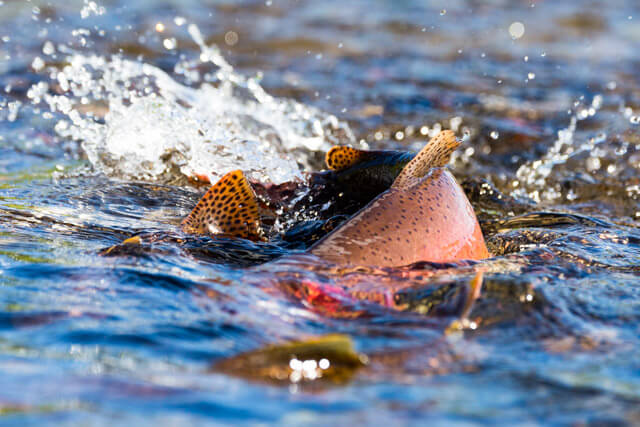Beneath the surface of Yellowstone’s waters swims a fish whose story is intricately tied to the fate of an entire ecosystem: the Yellowstone cutthroat trout. The common name “cutthroat” refers to the distinctive red coloration on the underside of the gill. This native fish is more than just a beautiful inhabitant of the park—it’s a keystone species, which is making a slow but steady comeback.
For thousands of years, cutthroat trout have lived in these waters, feeding bears, birds of prey, otters, and more, sustaining the intricate food web that keeps the park’s wilderness thriving. But in 1994, a hidden threat emerged: non-native predatory lake trout, which preyed on cutthroat trout and caused a catastrophic decline. In response, park biologists launched a monumental effort to remove lake trout and restore native fish. Guided by science and a multi-faceted strategy, the Native Fish Conservation Program continues to confront this crisis, working to restore balance to the park’s dynamic ecosystem.
This relentless effort is paying off. The population of mature, predatory lake trout has been reduced by about 90 percent, giving the native cutthroat trout space to recover. In 2024 alone, teams pulled 264,650 lake trout from the waters, bringing the total haul to over 4.9 million.
This vital work protects Yellowstone’s lakes, streams, and tributaries, preserving the natural balance of its waters. Progress is real, but the fight to restore native fish is far from over. With your support, Yellowstone Forever helps ensure these fish remain resilient, proving what’s possible when science, conservation, and community unite.
Support Yellowstone’s native fish conservation efforts today!
Feature image: Tom Murphy

Comments are closed.